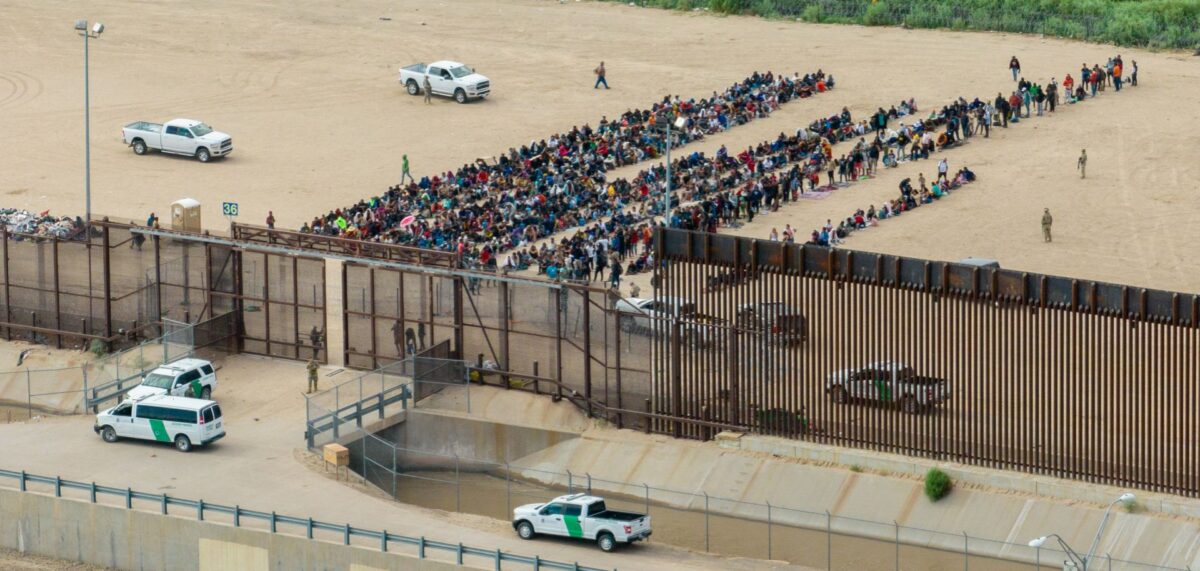The U.S.-Mexico border is witnessing a significant surge in migrant crossings, with numbers reaching historic highs. Over 600 migrants, including families and children, recently crossed into Eagle Pass, Texas, marking the largest group at the temporary transit centre, which has processed over 10,000 people in recent days. Originating mainly from Venezuela and Honduras, these individuals represent a fraction of the record-breaking figures encountered this year.
In November alone, authorities encountered 242,418 illegal crossings, contributing to the nearly 2.5 million incidents recorded in fiscal year 2023. This influx includes a notable increase in Indian migrants, with almost 100,000 intercepted this year, a sharp rise from previous years.
Table of Contents
Humanitarian Challenges in these Borders
The situation at the border has escalated into a humanitarian crisis, with migrants often using desperate measures to cross. The story of a little girl in a Santa hat crossing the river at dawn exemplifies the plight of these individuals seeking a better life. The surge has overwhelmed U.S. Border Patrol and state resources, leading to critical evaluations of President Joe Biden’s immigration policies.
Political Repercussions
The crisis has not only sparked a humanitarian concern but also political debates. Texas Governor Greg Abbott, a Republican, has been vocal in his criticism of Biden’s policies and response has approved a law criminalising illegal entry into Texas. This move, along with the pressure on the Biden administration for a more robust immigration policy, highlights the divisive nature of the issue.
Economic Impact
The border situation has also affected trade and the economy. The temporary closure of rail crossings in Texas disrupted billions in trade, impacting local economies and international relations. The Biden administration’s decision to close these routes to redirect personnel for migrant processing received backlash from businesses and government officials alike.
International Diplomacy and Future Plans
Efforts to address the crisis extend beyond U.S. borders. Mexican President Andrés Manuel López Obrador expressed willingness to assist with migrant containment but sought U.S. dialogue with Cuba and more development aid for migrants’ home countries. Meanwhile, U.S. officials are scheduled to meet with Mexican authorities to discuss immigration enforcement strategies.
Secretary of State Antony Blinken and Homeland Security Secretary Alejandro Mayorkas’s upcoming visit to Mexico signifies the international dimension of the crisis. Discussions will likely focus on collaborative efforts to manage the migrant flows and address underlying causes.
A Complex Issue with No Easy Solutions
The U.S.-Mexico border crisis is a multi-dimensional issue rooted in geopolitical conflicts, economic disparities, and humanitarian challenges. While the U.S. grapples with balancing its immigration policies, the continuous influx of migrants indicates a deeper, more systemic problem. It’s clear that any effective solution will require a comprehensive approach involving not just border security but also international cooperation and humanitarian aid.
As the U.S. heads into an election year, the border crisis remains a pivotal issue, influencing domestic and international relations. While facing criticism, the Biden administration recognises the need for a reformed immigration system, a task that is easier said than done in the current political climate.
Moving Forward
Looking ahead, the U.S. must navigate a delicate balance of securing its borders, upholding human rights, and maintaining international relations. The outcome of these efforts will have lasting implications on the nation’s immigration policies, its humanitarian stance, and its role in global diplomacy.



